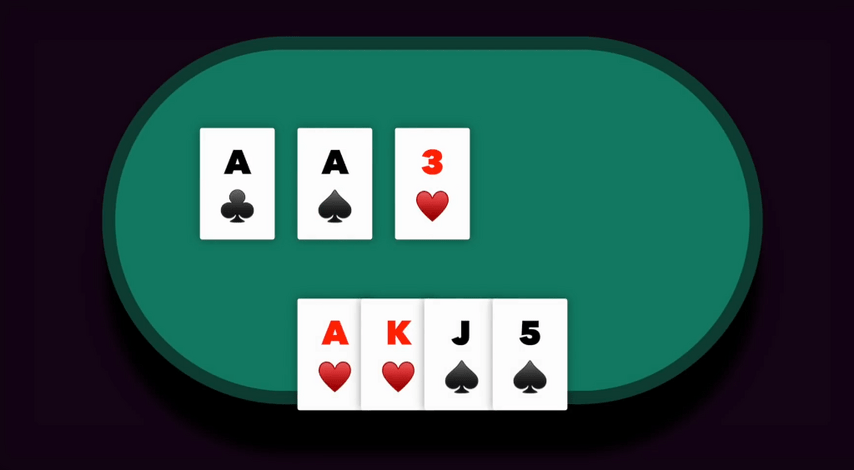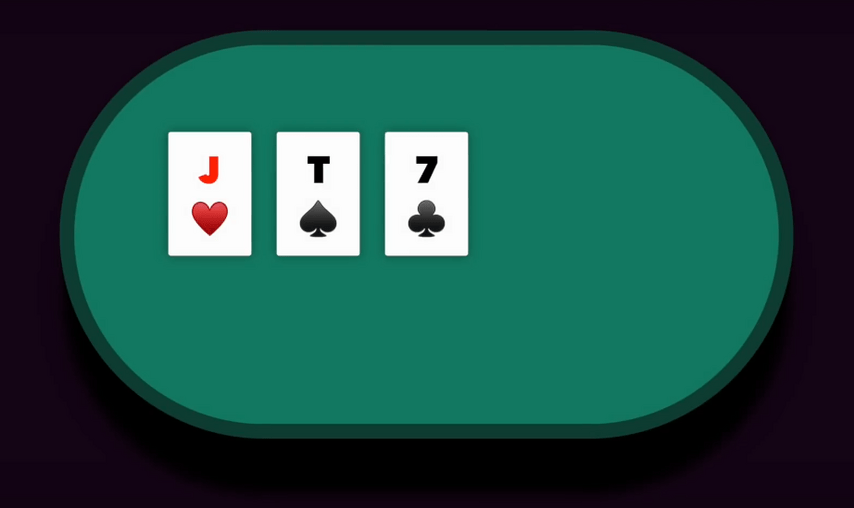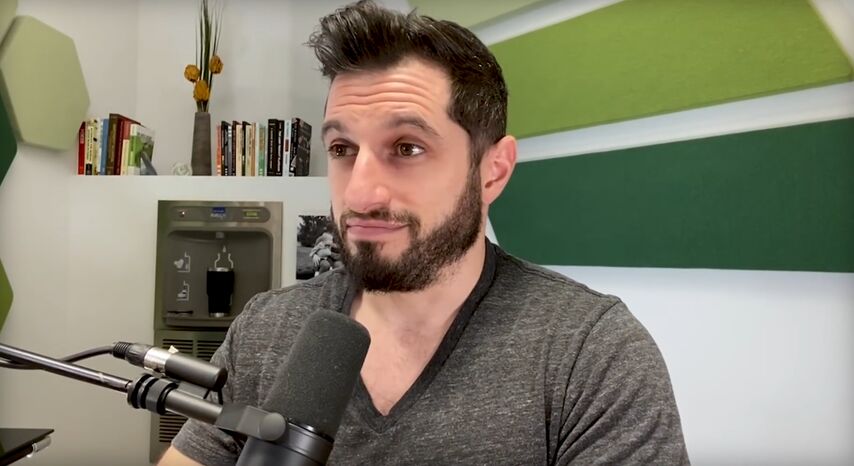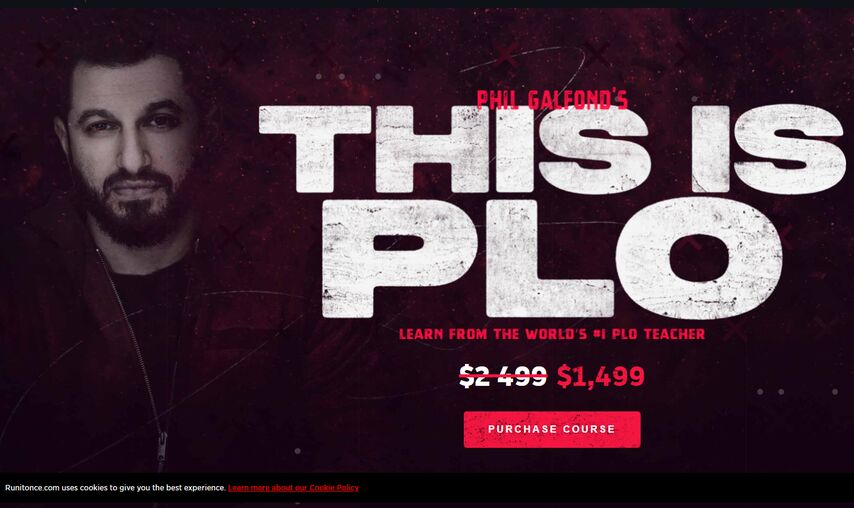(Editor's Note: We continue to share insights from one of poker's greatest minds by sharing this piece from February of 2022)
Phil Galfond recently recorded a new course called This Is PLO, the first video in the series was made publicly available. We've made note of an opinion about this work before, which was expressed by one of the strongest hold'em players in the world – makeboifin:
– Unpopular opinion: GTO trainers are by far the most overrated product in poker.
– Which one is the most underrated? – the readers asked.
– The first seven videos from Galfond’s PLO course.
– Cool, thanks for the answer. What advice do you have for hold'em?
– The first seven videos from Galfond’s PLO course.
– Now it comes. I'll definitely check it out.
– Haha, I'm not sure how useful they will be for beginners. But it seems to me that these videos contain truly valuable information.
The entire course now costs $1,500, and in the next couple of weeks the price will rise by another thousand, but perhaps the first video will be enough to explain the delight of the Finnish high roller.
Hi all. This is Phil. You are watching the first video of the This is PLO course. In it, I go into detail about the intricacies of playing heads-up Omaha, but most of the material is applicable to other Omaha formats, and some concepts, especially from the first few videos, are applicable to all types of poker, both live and online.
We will talk about many topics, we will discuss not only building a good gaming strategy, but also where EV comes from in a practical game. Let's start with the last one.
Where does EV come from?
In recent years, we have had the opportunity to load the entire strategy into the solver and get the mathematical expectation calculated by it from any line with any hand. After this, we can compare the line we chose in the hand with the optimal one and calculate the difference in expectation between them. “Oh, I deviated from the solver line and lost 0.15bb.” Some players believe that if their solutions are closer to the solvers than their opponents, they will gain an advantage. I don’t believe in this, or rather, I don’t consider this parameter particularly important. First, if we deviate in the same direction but my decisions are slightly closer to optimal, it only gives me a tiny gain in EV, so tiny that it is often not worth the effort. Secondly, if we deviate differently, it is quite possible that as my line gets closer to the solver, I will begin to lose EV – in the event that my suboptimal line coincidentally hits my opponent's weak point.
I believe that there is a certain threshold of understanding the optimal strategy, after which further refinements and improvements do not provide noticeable returns. We will get the bulk of EV in other ways.
Firstly, you need to be able to think logically about situations that arise. We cannot remember all the exact answers of the solver, but we must be able to apply logic. A big pot after an unusual line on the flop, for example, bet – 3-bet, we are bet into on the turn – the situation is so rare that we have never dealt with it, but we still have to make a decision, and we would like it to be of high quality. The same applies to adjustments to any unusual sizings and intricate runouts – in any situation, we must at least have an approximate idea of what the theory requires of us.
Secondly, a lot of EV is won by quality thinking and adjustments during the game. A high level of technical and logical readiness is complemented by empathy, psychology, understanding of the opponent, accumulation of reads, and their use. During a game, our brains need to have enough resources to remember everything, notice everything, think about the information received, and consciously deviate from what we think is the optimal game in search of maximum EV. This is where the main money is won.
How can we improve the quality of our thinking and make it more stable? Daniel Kahneman wrote an excellent book, Thinking Fast and Slow – I haven't read it myself, but many people I trust have spoken very highly of it, and I learned the ideas I'll talk about from the author's public lectures. Kahneman distinguishes “System 1” and “System 2” in our thinking. These are not anatomical areas of the brain, but simply terms invented by him to describe certain features of thinking. System 1 is fast, subtle, intuitive thinking that no longer requires conscious effort on our part. For example, walking, a simple count like 2+3 = ? (the answer appears in the head instantly), reading (we just need to look at the word, and we instantly read its meaning). System 2 is slower and more complex thinking, often involving counting. For example, if I ask you to answer what is 22 x 17, an immediate answer will come only if you have for some reason learned it by heart. Otherwise, you will have to make a conscious effort and spend a little time. Or, let's say... Actually, examples from poker are easier for me, so let's move on to them.
System 1 and System 2 at the poker table
What size do you open on the button? (Okay, in Omaha we open the pot from any position, exceptions are found only in tournaments, but this is not so important for my example.) System 1 is responsible for choosing the size of our opening raise – this is an automatic action... at least it should be them.

What combination does your hand make on this flop? I think you gave the immediate answer – trips. This is our System 1. However, once upon a time, when you did not know the rules of poker, you simply could not answer, and a little later, when you first became acquainted with Omaha, you would have to think a little: “There are two aces on the flop, I have another, but you can only use two cards from your hand... an ace and a king... looks like I have trips!” At the beginning of your journey, you had to connect System 2 to recognize combinations, but regular practice taught your brain to transfer this task to System 1. In my videos, I will try to help you transfer many other tasks to System 1.
For example, HU PLO, you 3-bet, got called and saw the flop.

What should your continuation bet size be? Or are there several of them?
I wonder if you had to think about it or if the answer came automatically? Hopefully, by the end of the course, you will all be able to answer questions like this instantly, that's one of my goals. You will also be able to quickly choose between betting and checking with 80-90% of your hands on any flop texture. You'll have to think about the rest – there are difficult cases on all textures. However, a complex case usually allows for a mixed decision, but even if not, your mistake will not be gross, and it is always better to make a decision quickly, without spending extra effort on it, because the difference in expectation in such cases is minimal. Brain resources will be useful for other tasks.
How to become stronger in poker
First of all, we strive to develop the brain's ability to perform calculations using System 2 in any circumstances. The ability to perform complex calculations consistently and on the fly allows you to maximize your level of play. But this requires resources, and this leads to the second point: we must transfer as many solutions as possible from system 2 to system 1. This will relieve system 2 and save energy for complex tasks. Even if you play one table live, the freed up resources will sooner or later come in handy and help you make better choices.
There are other benefits to moving a large number of decisions to System 1: you'll spend less effort and be able to play longer sessions at a good level; even on tilt you will play better, because reducing the number of independent decisions reduces the margin for mistakes; your self-confidence will increase. It seems to me that the more often during a session I find myself in situations in which I do not know the right answer, the more often I find myself in a dead end, the worse I am at making good decisions that give additional EV.

During the first Galfond Challenge match, I was still studying. I had to make many of the decisions that would go into System 1 through conscious effort. I had a hard time remembering my default strategy, and it took up so many resources that for quite a while I didn't even try to read my opponent's hands. As the match progressed, I was able to automate this process, which finally allowed me to more closely monitor my opponent and make the necessary adjustments. At first, I was only looking at statistics, and my adjustments were more mathematical – say, increase the percentage of bluff test bets on the turn. I didn't adjust at all during the session.
Unfortunately, when learning, this period is inevitable. It is impossible to work out the theory so well that you will not experience problems at all after returning to the tables. Therefore, I do not recommend long-term studies of theories without practice, as well as vice versa. Theory and practice must go hand in hand. Over time, the new knowledge is strengthened, and everything returns to normal. It's like stretching: if I do a series of exercises now, tomorrow morning my flexibility will not improve, but over the course of the day the daily work will bear fruit.
It's time to tell you how I built the educational material. First, we will study solver logic – not in order to play like a solver (in many cases I believe that we simply do not have the right to follow its recommendations), but in order to learn how to think like a solver. It is absolutely necessary to understand why the solver recommends this or that line, otherwise our deviations from the optimal strategy can cost us too much.
The next section, which makes up the majority of the course, is the theoretical part, the strategy tree. We will go through all the significant situations that can arise when playing heads-up Omaha. There will be a lot of detail, especially when it comes to the texture of the board. This will allow, firstly, to automate sizing to free up brain resources for more important tasks, and secondly, to automate continuation bets, delayed continuation bets, checks, feeler bets, and barreling on all flops and turns and most rivers. The entire basic strategy should be as clear to you as identifying a hand on the flop.
After that, when you learn the solver strategy in all situations, I will tell you how I build my own strategy based on it. You will notice that in some cases I will strongly defend my opinion about the rightness or wrongness of certain actions, while in others I will not be so sure. I assure you, the point here is not that I am poorly versed in some topics, but that the choice of solution is not fundamental in them, and with correctly assembled ranges you can play as you like.
Next, I'll talk a little about how and why I deviate from the solver's strategy, both at the stage of building a range and due to information learned about the opponents' play.
All the videos will be very rich, I recommend watching them regularly, but it is not necessary to watch the entire course in order. If you are doing well with one-raised pots, but have problems with 3-bet pots, you can start watching a video on the topic you need and will not lose anything because of it. Decide for yourself how it is more convenient for you to work.
Finally, I'll talk about what I believe is the key to gaining an edge – hand reading. This is where, in my opinion, most of the money is made. Some players with a solver mindset do not agree with me, well, perhaps I am wrong, I am always ready to meet them at the table to understand the issue better.
Once again I repeat what I think is very important: everyone, even the strongest players in the world, have holes in their strategy – situations in which they under-bluff too much or bluff too often, call too often or not enough. Gaping holes among the elite players are rare, but you still notice them from time to time. The ability to use them quickly and effectively gives you a huge increase in your win rate. However, to find these holes and find the keys to them, you will need maximum brain resources. In this section, I will talk about my method and show some examples.
It's the adjustments that will give you the most EV, but to get there you'll have to make most of your play automatic. This is why I put the hand-reading videos at the end of the course, even though I think they are the most important.
The course concludes with a review of sessions from Galfond's Challenge matches. There you will see how I put theory into practice and how I adapt to different opponents in real time.















